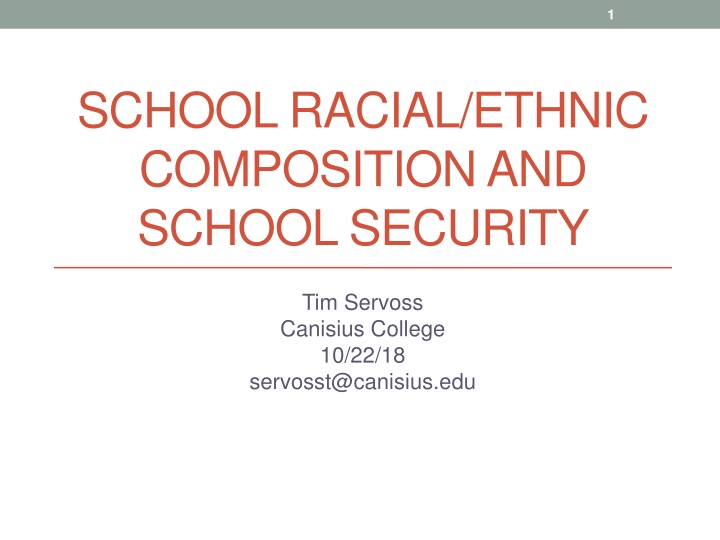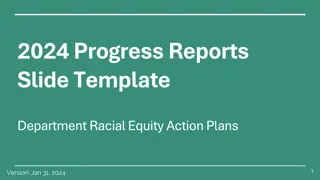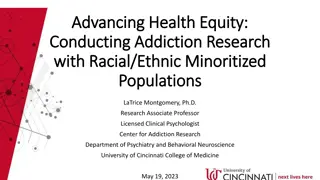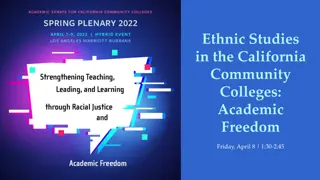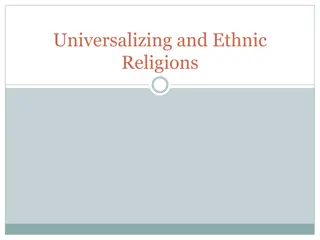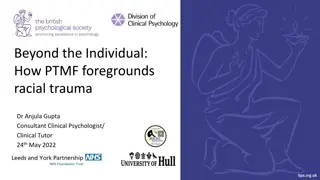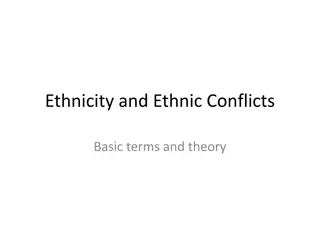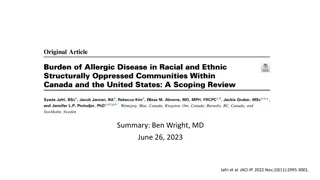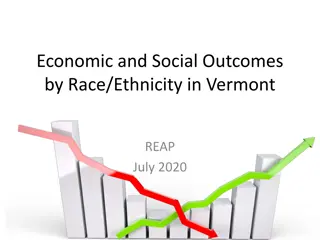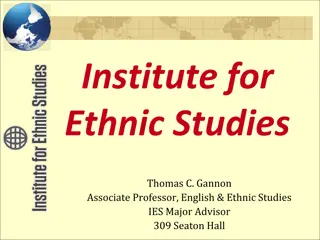Impact of Racial/Ethnic Composition on School Security
This study by Tim Servoss at Canisius College explores the relationship between racial/ethnic composition of schools and their security measures. Analyzing data from the 2015-2016 School Survey on Crime and Safety, the research investigates how the percentage of Black and Hispanic students in schools influences overall security levels and specific security protocols. Results indicate varying correlations between racial composition and security measures, shedding light on potential implications for school safety policies.
Download Presentation

Please find below an Image/Link to download the presentation.
The content on the website is provided AS IS for your information and personal use only. It may not be sold, licensed, or shared on other websites without obtaining consent from the author.If you encounter any issues during the download, it is possible that the publisher has removed the file from their server.
You are allowed to download the files provided on this website for personal or commercial use, subject to the condition that they are used lawfully. All files are the property of their respective owners.
The content on the website is provided AS IS for your information and personal use only. It may not be sold, licensed, or shared on other websites without obtaining consent from the author.
E N D
Presentation Transcript
1 SCHOOL RACIAL/ETHNIC COMPOSITION AND SCHOOL SECURITY Tim Servoss Canisius College 10/22/18 servosst@canisius.edu
2 Research Questions Does school racial/ethnic composition predict overall levels of security at American middle and high schools? If so, do these relationships hold when other school characteristics associated with school security are accounted for? Does school racial/ethnic composition predict the presence and pattern of school security personnel at American middle and high schools? If so, do these relationships hold when other school characteristics associated with school security are accounted for?
3 Data and Measures 2015-2016 School Survey on Crime and Safety (SSOCS) Nationally representative sample of schools About 1500 middle and high schools School weights and jackknife replicate weights for variance estimation applied using AM Overall Security 27 items tested for fit and scaled using dichotomous Rasch model Final scale score based on 22 items Underlying security construct accounts for 80% of the variance among the items Racial/Ethnic composition Percent of student body comprised of Black students Percent of student body comprised of Hispanic students
4 Bivariate Results Correlations % Black and overall security (r = .187, p < .001) % Hispanic and overall security (r = .091, p = .015) ANOVA comparing means No significant difference based on the % Hispanic population Significant difference based on the %Black population
5 Bivariate Results-Means d = .42 d = .89
6 Bivariate Results-Specific Measures Comparing the schools with no Black students to those with the most No difference Significant difference School doors locked Visitor sign-in Class doors lock Grounds closed/locked gates Dog sniffs Daily metal detector Sweeps for contraband Random metal detector Drug testing Uniforms Strict dress code Student ID Presence of lockers Faculty/Staff ID Silent alarm (panic button) Two-way radios Clear book bags Police/SRO Security cameras Security Guards Electronic emergency notification Anon. threat reporting system OR 7.12 2.76 --- 6.73 7.73 6.50 2.50 4.02 5.04 4.93
7 Other characteristics Urbanicity Region of the US SES (% students receiving free or reduced lunch) Crime in neighborhood where school is located Size (n of students enrolled) Academics (% of students scoring < 15%-ile on standardized tests) Misbehavior in the school Racial/ethnic tension, bullying, harassment, widespread disorder in classrooms, verbal abuse of teachers, other acts of disrespect for teachers, gang activities Crime in the school Rape, sexual assault, robbery, physical attack, threats of physical attack, theft, weapons possession, distribution/possession of drugs/alcohol, vandalism
8 Multiple Regression results Are %Black and %Hispanic students in the school still significant predictors of security even when adjusting for all of the characteristics listed on the previous slide? Yes!, for %Black ( = .113, p = .017); for %Hispanic ( = .132, p = .005) What else matters? Region (Northeast and West, less than Midwest) School size (more security in larger schools) Crime (more security in schools with more crime) Racial/ethnic composition is a slightly stronger predictor than crime Adjusting for region and school size Crime accounts for 2.5% of variance in security Racial/ethnic composition accounts for 3.0% of variance in security
9 Racial/ethnic composition and security personnel Categorized schools into one of 4 categories No security personnel (23%) Guards only (7%) Police only (46%) Both Guards and Police (24%) Multinomial regression DV = Guards vs None, Police vs None, Both vs None, Predictors = urbanicity, region, SES, neighborhood crime, enrollment, % < 15th percentile, misbehavior and crime in the school, %black, %hispanic
10 Multinomial results (significant predictors) Guard vs None Urbanicity (Rural) --City (3.59) --Suburb (2.44) Region (Midwest) --Northeast (3.98) Police vs None Both vs None Urbanicity (Rural) --City (2.40) --Suburb (2.03) Region (Midwest) --South (1.68) --West (0.42) Neighborhood crime (Low) --Moderate (1.67) Enrollment (1.27) Crime in the school (low) --Moderate (1.88) --High (2.23) Neighborhood crime (Low) --Moderate (3.03) Enrollment (1.27) Crime in the school (low) --Moderate (2.46) Neighborhood crime (Low) --Moderate(1.85) Enrollment (1.45) Crime in the school (low) --Moderate (1.82) --High (2.15) %Black Students (1.11) %Hispanic Students (1.11)
11 Unanswered questions/future directions What are the processes that explain these disparities? How are decisions regarding security implementation made? Longitudinal research Should be a possibility using CRDC data Personnel variables (FTE police and guards) Racial composition Crime data
